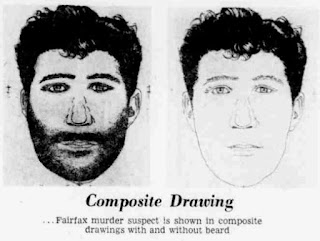Part of my process in preparing to start this blog was to download every available digitized newspaper article about Fairfax that I could find. These articles are a great help in composing articles about important events in our village history. However, there were also a good number of human-interest stories. Although these aren’t necessarily the most significant stories, they are often lighthearted and give us an entertaining glimpse of life in the past. As you review these stories, please think about which one may have been most highly fictionalized. I would love to hear your comments.
Lion on the Loose
It’s not unusual these days to hear about animals roaming
the streets of Fairfax: escaped dogs looking for a little excitement, deer taking
a morning stroll through the streets, and the occasional no-account coyote
searching for trouble. However, in January 1936, Fairfax residents briefly had
a bigger animal control concern.
Surprisingly, there were no further reports of lion
sightings in Fairfax.
The Seven Leaf Clover
The May 27, 1936 Cincinnati Post brings us the
story of Mrs. Frank Schaffner, who found a seven-leaf clover while walking near
her home at the corner of Hawthorne and Southern. As we all know, four-leaf
clovers are supposed to bring the finder good luck. Mrs. Schaffner did not keep
her clover, however, stating “I’ve found lots of them with four, five, and six
leaves and never noticed any extra good luck following.”
Scrap Barrel Poem
During World War II, the U.S. government asked citizens
to turn over certain scrap items that were in short supply to help with the war
effort. These items included metal, rubber, newspapers, and even kitchen fat. There
were scrap barrels on street corners and scrap drives to encourage participation.
This picture isn’t from Fairfax, but shows a scrap drive and scrap barrels.
Accessed from Lehigh County Historical Society, http://www.lchs.museum/ww2/scrap.htm
Tarzan and His Apes
The April 24, 1947 Cincinnati Post reported on a
complaint filed with the county police by Germania Avenue resident Howard Wood.
Mr. Wood alleged that a man identified only as “Tarzan” cruised the streets
nightly with his “three barking apes.” Mr. Wood wasn’t as concerned with the
animals as he was with “the allegedly wreckless manner in which the driver
operated his ape-laden truck.” Mr. Wood said that the driver struck a pole on
Watterson Avenue. The driver summoned a wrecker and he and his passengers left
the scene before county police arrived.
Fairfax School Barricade
The April 17, 1952 Cincinnati Times-Star reported
that Mariemont Schools would erect a barricade in the driveway of Fairfax
School to prevent the hot rod racing that had occurred there within the past
week. Tire marks were found on the school lawn.
The Daredevil
So, what else did Fairfax teenagers do for fun back in
the 1950s? The June 8, 1959 Cincinnati Enquirer told the story of
15-year-old Gary Hodge, whom Fairfax patrolman Charles Doughton and fireman
“Smoky” Whiteford found clinging to a transmission tower near Red Bank Road, 30
feet above the ground. Gary told the men
that he had climbed the tower “to get a good look around.” He said he had
fallen 70 feet down the tower and broke his fall by grabbing a girder.
Mayor Who?
In his June 25, 1963 column in the Cincinnati Post
& Times-Star, Si Cornell revealed that Fairfax mayor Ronald George
Cribbet had not used his legal name for the first 40 years of his life. He had
recently gotten a birth certificate for the first time and learned that his
legal name was actually George Roland Cribbet. Everything from his home to his
Social Security card was in the name of Ronald George. Mrs. Cribbet was quoted
as joking, “I’m not married to you!” The mayor was in the process of legally
changing his name to Ronald George.
Typewriter Cake
Cincinnati Post columnist Si Cornell wrote in the
May 14, 1975 edition about the typewriter cake Betty McLaughlin of Fairfax
created for his birthday. Mrs. McLaughlin tried to give Si the cake for no
charge because it was her first attempt at a typewriter cake, but he paid her
for it nevertheless. She typically charged five dollars for a cake.
Silent Petie
The Town & Country column of the December 31, 1981 Cincinnati
Post told the story of the pet canary of village councilmember and former
Fairfax police chief James Finan. Mr. Finan named the canary Silent Petie
because the young bird didn’t sing at first. As the bird matured, it began to
sing and Finan was considering dropping “Silent” from his name.







